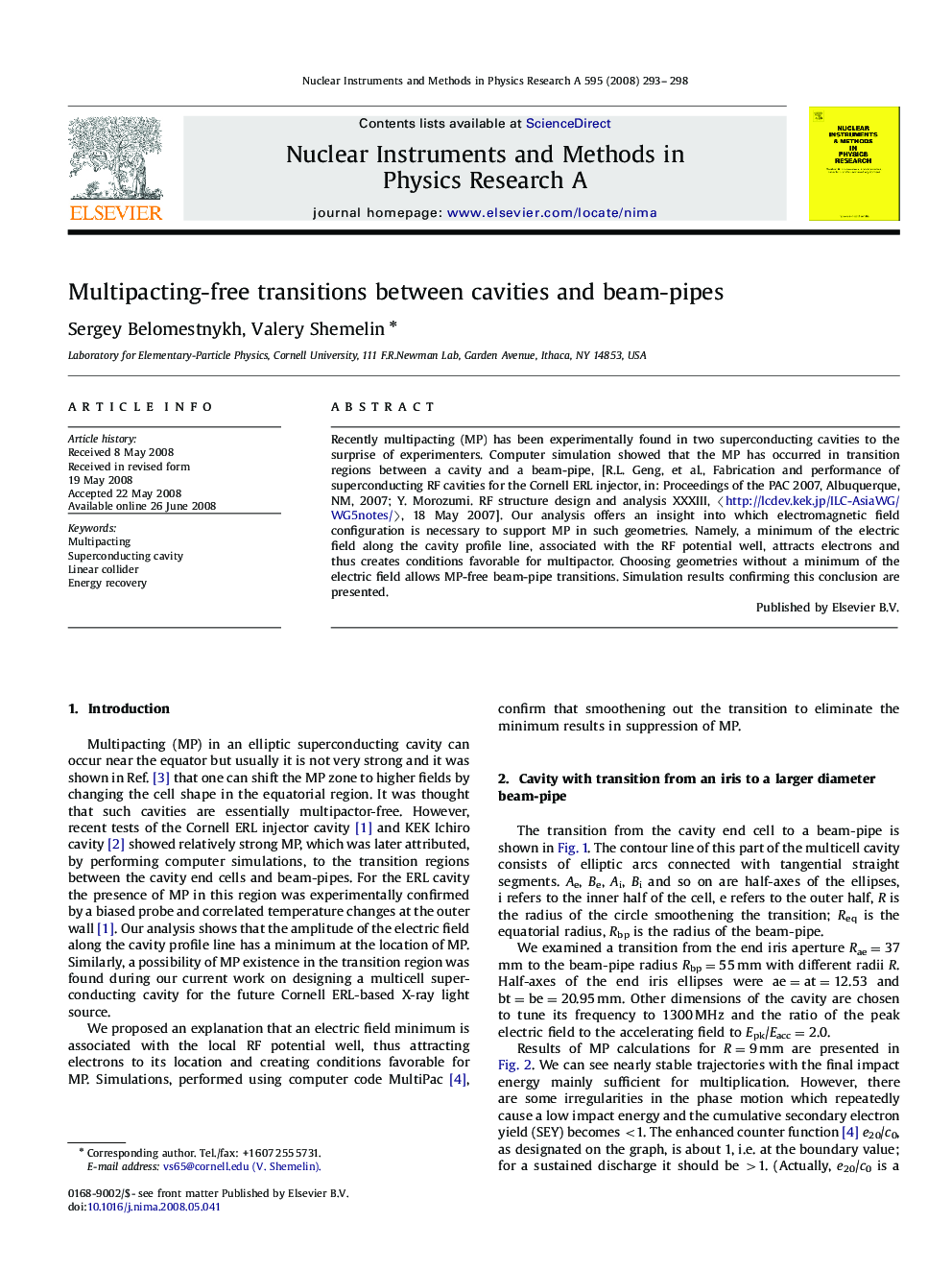| Article ID | Journal | Published Year | Pages | File Type |
|---|---|---|---|---|
| 1830446 | Nuclear Instruments and Methods in Physics Research Section A: Accelerators, Spectrometers, Detectors and Associated Equipment | 2008 | 6 Pages |
Abstract
Recently multipacting (MP) has been experimentally found in two superconducting cavities to the surprise of experimenters. Computer simulation showed that the MP has occurred in transition regions between a cavity and a beam-pipe, [R.L. Geng, et al., Fabrication and performance of superconducting RF cavities for the Cornell ERL injector, in: Proceedings of the PAC 2007, Albuquerque, NM, 2007; Y. Morozumi. RF structure design and analysis XXXIII, ãhttp://lcdev.kek.jp/ILC-AsiaWG/WG5notes/ã, 18 May 2007]. Our analysis offers an insight into which electromagnetic field configuration is necessary to support MP in such geometries. Namely, a minimum of the electric field along the cavity profile line, associated with the RF potential well, attracts electrons and thus creates conditions favorable for multipactor. Choosing geometries without a minimum of the electric field allows MP-free beam-pipe transitions. Simulation results confirming this conclusion are presented.
Related Topics
Physical Sciences and Engineering
Physics and Astronomy
Instrumentation
Authors
Sergey Belomestnykh, Valery Shemelin,
